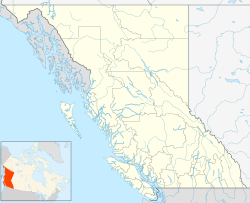This article includes a list of general references, but it lacks sufficient corresponding inline citations .(December 2012) |
Furry Creek | |
|---|---|
 Golfing at Furry Creek | |
Location of Furry Creek in British Columbia | |
| Coordinates: 49°35′00″N123°12′40″W / 49.58333°N 123.21111°W | |
| Country | |
| Province | |
| Area codes | 250, 778 |
Furry Creek is a community in the Canadian province of British Columbia, located on Howe Sound in the Squamish-Lillooet Regional District, north of Vancouver and south of Squamish.
